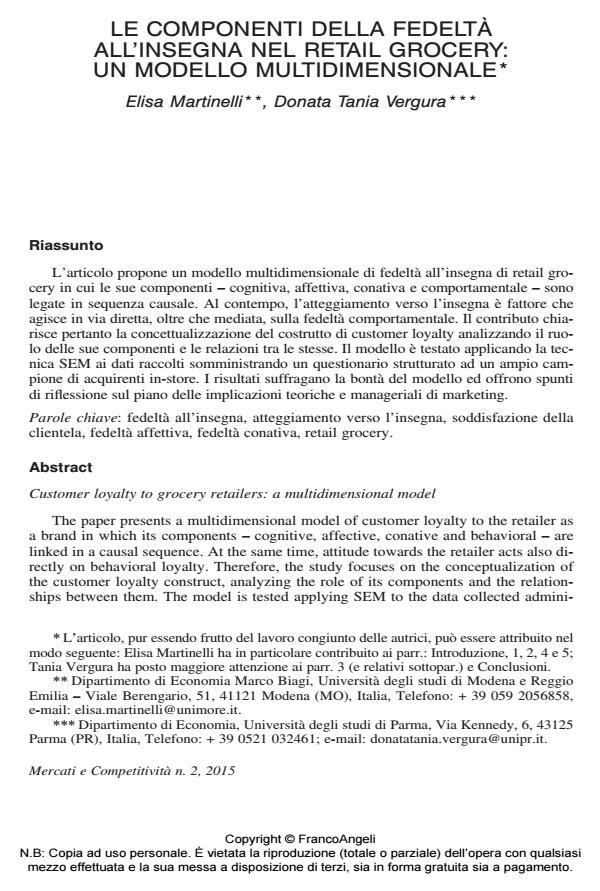Le componenti della fedeltà all’insegna nel retail grocery: un modello multidimensionale
Titolo Rivista MERCATI & COMPETITIVITÀ
Autori/Curatori Elisa Martinelli, Donata Tania Vergura
Anno di pubblicazione 2015 Fascicolo 2015/2
Lingua Italiano Numero pagine 21 P. 45-65 Dimensione file 652 KB
DOI 10.3280/MC2015-002004
Il DOI è il codice a barre della proprietà intellettuale: per saperne di più
clicca qui
Qui sotto puoi vedere in anteprima la prima pagina di questo articolo.
Se questo articolo ti interessa, lo puoi acquistare (e scaricare in formato pdf) seguendo le facili indicazioni per acquistare il download credit. Acquista Download Credits per scaricare questo Articolo in formato PDF

FrancoAngeli è membro della Publishers International Linking Association, Inc (PILA)associazione indipendente e non profit per facilitare (attraverso i servizi tecnologici implementati da CrossRef.org) l’accesso degli studiosi ai contenuti digitali nelle pubblicazioni professionali e scientifiche
L’articolo propone un modello multidimensionale di fedeltà all’insegna di retail grocery in cui le sue componenti - cognitiva, affettiva, conativa e comportamentale - sono legate in sequenza causale. Al contempo, l’atteggiamento verso l’insegna è fattore che agisce in via diretta, oltre che mediata, sulla fedeltà comportamentale. Il contributo chiarisce pertanto la concettualizzazione del costrutto di customer loyalty analizzando il ruolo delle sue componenti e le relazioni tra le stesse. Il modello è testato applicando la tecnica SEM ai dati raccolti somministrando un questionario strutturato ad un ampio campione di acquirenti in-store. I risultati suffragano la bontà del modello ed offrono spunti di riflessione sul piano delle implicazioni teoriche e manageriali di marketing.
Parole chiave:Fedeltà all’insegna, atteggiamento verso l’insegna, soddisfazione della clientela, fedeltà affettiva, fedeltà conativa, retail grocery.
- Handbook of Research on Retailing Techniques for Optimal Consumer Engagement and Experiences Elisa Martinelli, Donata Tania Vergura, pp.33 (ISBN:9781799814122)
Elisa Martinelli, Donata Tania Vergura, Le componenti della fedeltà all’insegna nel retail grocery: un modello multidimensionale in "MERCATI & COMPETITIVITÀ" 2/2015, pp 45-65, DOI: 10.3280/MC2015-002004